Increasing the upper ocean heat content of the tropical Pacific, a key sea area in the Earth's climate system is likely to lead to a wetter monsoon region in eastern Asia.
On October 20, Beijing time, Nature published online the latest research achievements of Professor JIAN Zhimin's team from the State Key Laboratory of Marine Geology of Tongji University, entitled "Warm pool ocean heat content regulates ocean-continent moisture transport.” The researchers discovered that tropical ocean warming has a strengthening effect on the East Asian monsoon climate. For the first time, it explained the driving role of low-latitude ocean processes in climate evolution from the energetics perspective, providing insights into the relationship between sea-land water thermal cycle.
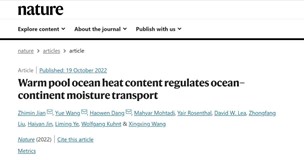
Research results of Professor JIAN Zhimin's team published in Nature
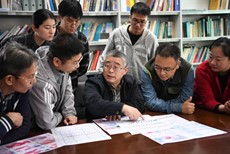
Professor JIAN Zhimin's team
The ocean is the largest thermal reservoir of the Earth's climate system. Since the industrial revolution, the greenhouse effect of the man-made release of carbon dioxide has caused global warming, and more than 90% of the excess heat has gone into the ocean. The tropical Indian Ocean-Western Pacific Warm Pool is the region with the highest surface sea temperature and the most concentrated heat content in the world. It provides energy and water vapor for atmospheric upward movement and convective rainfall and is also the "heat and steam engine" of the entire Earth’s climate system. The upper ocean heat content is also a key factor in tropical storms (typhoons). In recent years, in the context of global warming, the ocean heat continues to increase, which is believed to be closely related to the enhanced destructive power of landfall typhoons in East Asia. However, the correspondence between ocean heat content and land rainfall remains implicit. The shortage of observation data through modern instruments has restrained human beings from predicting and preventing extreme weather/climate disasters. Therefore, it becomes urgent to use geological records and digital simulations to study the past changes in ocean heat content and their modulating effects on the sea-land energy/water cycle.
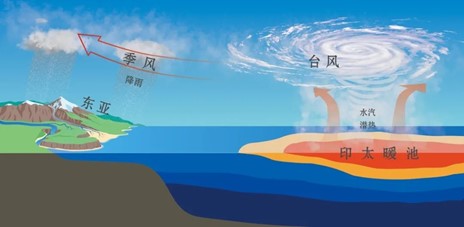
Figure 1: The warming of the upper tropical Pacific Ocean is closely related to
the enhanced rainfall in the East Asian monsoon region.
Professor JIAN Zhimin's team first used the planktonic foraminiferal microfossils in 10 deep-sea sediment cores in the warm pool area to reconstruct the changes in the heat content of the upper seawater (0-200m) over the past 360,000 years and found out that the reconstruction records of the heat content in the warm pool were very consistent with the shape and amplitude of the heat content curve of the transient simulation of the numerical model of the Earth's climate system. The team also reconstructed the residual oxygen isotope of surface seawater in the warm pool. The results are consistent with the change in heat content in the warm pool. Both of them have synchronous changes with the oxygen isotope of atmospheric rainfall recorded by Chinese stalagmites in the precession cycle: that is, the heat content of the warm pool increases, corresponding to the heavier residual oxygen isotope of seawater and the lighter oxygen isotope of stalagmites (Figures 2 and 3).
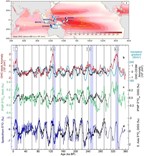
Figure 2: Reconstruction (color lines) and simulation (black lines) of the heat content of
the warm pool and the sea-land oxygen isotope "seesaw"
Professor JIAN Zhimin remarked, "this shows that the heat change of the warm pool can regulate the water vapor transmission between the Pacific Ocean and the Asian continent on a 10,000-year scale astronomical cycle. When the heat of the warm pool increases, the tropical sea surface evaporation increases, and water vapor converges, and transfers to the adjacent land in the form of monsoons and typhoons, increasing rainfall in East Asia. " This discovery is based upon the team's long-time research on paleoceanography of the subsurface seawater of the Western Pacific Warm Pool over the years.
The researchers make good use of modern observations, paleoenvironmental proxies, and transient simulations of the air-sea coupling model and water isotope numerical model (Figure 3) to explore the water vapor latent heat transfer from the perspective of the upper ocean heat content (rather than the surface seawater temperature) in the warm pool, and measures the intensity of the global monsoon water cycle through the water isotope gradient between sea and land. The research not only expands the energetics research on the ancient ocean and climate but also provides a new approach to "discussing the present from the past" for modern and future climate change.
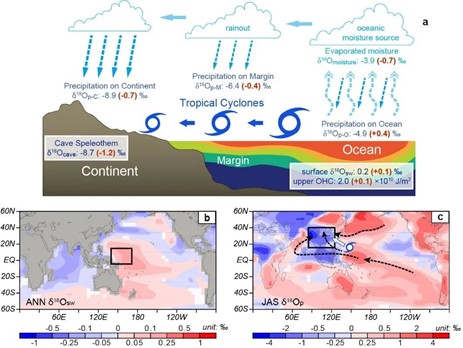
Figure 3: Oxygen isotope fractionation diagram and numerical simulation results of sea-land water cycle
The paper’s authors also pointed out the role of this research in promoting a comprehensive understanding of the global hydrological cycle. Professor Mahyar Mohtadi, University of Bremen, Germany, said: "From the perspective of energetics, the coupling between ocean heat content and monsoon change is the key to regulating the global hydrological climate. At the same time, both are regulated by changes in astronomical solar radiation." Professor Yair Rosenthal of Rutgers University said: "Our work proposed that compared with the sea surface temperature, the change of ocean thermal structure is the most critical factor determining the migration of ocean water vapor and latent heat and their transport to land."
Professor JIAN Zhimin is the first and corresponding author of the paper, and team members WANG Yue and DANG Haowen are the second, third, and co-corresponding authors, respectively. Their international collaborators are from the University of Bremen in Germany, Rutgers University in the United States, the University of California Santa Barbara in the United States, and Kiel University in Germany. The research was supported by the National Natural Science Foundation of China and a research scheme of the Shanghai Science Commission.
Paper link: https://www.nature.com/articles/s41467-018-06539-w